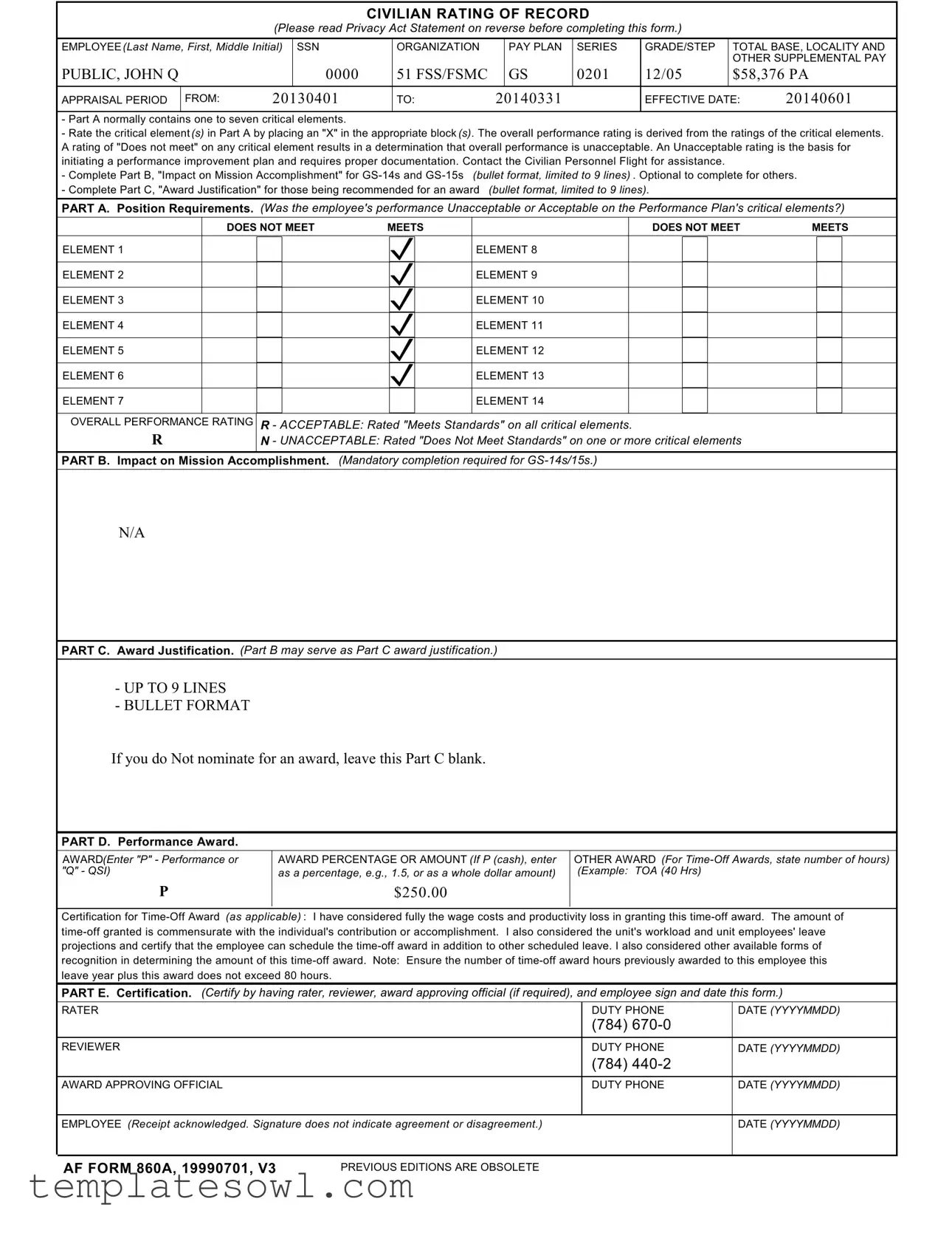What is the purpose of the AF 860A form?
The AF 860A form, also known as the Civilian Rating of Record, is utilized to evaluate the performance of civilian employees within the U.S. Air Force. It serves as a formal method for assessing job performance against established critical elements. This evaluation guides decisions related to awards, promotions, and performance improvement plans.
Who is required to complete the AF 860A form?
The AF 860A form must be completed by supervisors or managers of civilian employees in the U.S. Air Force. The completion is essential when conducting performance evaluations, particularly for positions at the GS-14 and GS-15 levels. These evaluations contribute to comprehensive personnel records and promote accountability within the workforce.
What are the critical elements rated on the form?
Part A of the AF 860A contains one to seven critical elements that are essential for assessing an employee’s performance. Each element must be rated, and the overall performance rating is derived from these ratings. If an employee receives a "Does not meet" rating on any critical element, their overall performance is deemed unacceptable.
What happens if an employee receives an unacceptable rating?
An unacceptable rating on any critical element initiates a requirement for a performance improvement plan. This plan aims to address the specific areas where the employee has fallen short. Documentation must be maintained throughout this process, and it is advisable to contact the Civilian Personnel Flight for assistance in developing the plan and ensuring compliance with relevant procedures.
What is the significance of Parts B and C of the form?
Part B captures the impact of an employee’s performance on mission accomplishment, which is mandatory for GS-14 and GS-15 employees. Part C is used for award justification, where accomplishments can be outlined in a bullet format. These sections, while optional for lower grades, provide valuable context for performance evaluations and potential recognitions.
What are the requirements for performance awards listed on the AF 860A?
When recommending performance awards, the appropriate award type (either cash or time-off) must be indicated. For cash awards, the amount or percentage needs to be specified. If a time-off award is granted, the number of hours should be stated, and the granting authority must ensure that total time-off awards do not exceed 80 hours within the leave year.
How is the appraisal section structured for promotion considerations?
Part F of the AF 860A is dedicated to the Civilian Promotion Appraisal, which uses ratings from various appraisal factors. These factors assess observable work behaviors that predict future performance potential at a higher grade level. Ratings are given on a scale from 1 to 9, indicating performance quality, which aids in ranking candidates during competitive placement actions.
What should employees know about the Privacy Act and their information?
The AF 860A is subject to the Privacy Act, which protects the personal information of employees, including Social Security numbers. This information is essential for accurate identification within records. While providing this information is voluntary, failure to do so could affect the ability to maintain accurate records and manage personnel actions effectively.


